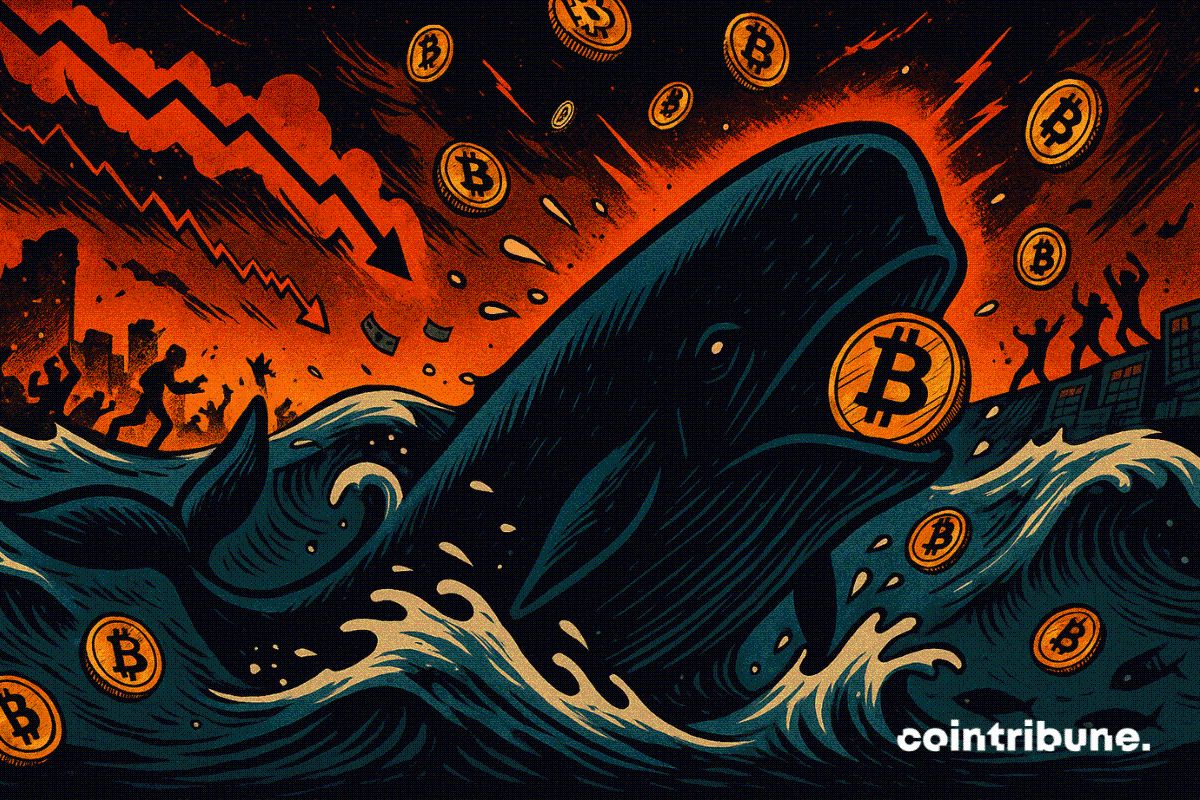When Will Be The Next Big Crypto Market Crash? The Answer Will Surprise You
AI analysis of past crashes, macro shifts, and 2025 trends suggests the next crypto winter may arrive sooner than many expect.
With Bitcoin trading at $117,000 and the crypto market cap hitting over $4 trillion, the industry has been rejoicing in a prolonged bull market for more than a year now. But a grim reality of the crypto market is that a crash is always lurking.
So, when will be the next crypto winter and bear market? We have gathered extensive data on previous crypto winters dating back to 2011, events that preceded the bear markets, the underlying macroeconomic trends, and the current hype cycle.
These data were then analyzed through AI to predict the next potential crypto winter and market crash. The findings might surprise you.
How Many Crypto Winters Have Occurred So Far?
Until 2025, there have been four major crypto winters. Each was triggered by different events (exchange hacks, stablecoin failures, exchange bankruptcies).
Still, all were marked by prolonged price declines, investor exits, and a slowdown in funding and innovation before recovery phases.
2011 Crash
- Bitcoin fell from about $32 to $2 after the first big speculative bubble.
- This marked the first “crypto winter,” though it was short compared to later ones.
2014–2015 (Mt. Gox Collapse)
- Triggered by the Mt. Gox hack and regulatory crackdowns.
- Bitcoin dropped from over $1,100 to nearly $150.
- The market stayed depressed for almost two years.
2018–2020 (Post-ICO Bust)
- After Bitcoin hit nearly $20,000 in late 2017, it collapsed to $3,000 in December 2018.
- Thousands of tokens failed, and venture interest dried up.
- This bear market lasted until late 2020, when the next bull cycle began.
2022–2023 (Post-Terra/Luna & FTX Collapse)
- Sparked by the Terra/Luna collapse, cascading liquidations, and later FTX’s bankruptcy.
- Bitcoin fell from its $69,000 peak in November 2021 to around $15,500 in late 2022.
- The downturn extended through most of 2023, with recovery beginning in 2024.
Market Patterns Before Each Crypto Winter
Each crypto winter was preceded by a period of irrational exuberance, hidden fragility, and over-concentration of risk.
Once a major failure exposed these weaknesses, trust evaporated and liquidity dried up, dragging the market into a prolonged downturn.
- Excessive Speculation: Each winter followed a hype cycle where prices grew far faster than adoption.
- Concentration of Risk:
- 2011: Few exchanges.
- 2014: Mt. Gox dominance.
- 2018: Heavy reliance on tokens.
- 2022: Dependence on Terra, FTX, and CeFi lenders.
- Leverage & Fragile Models: Margin trading (2014), tokens with no revenue (2018), High-yield “risk-free” products (2022).
- Regulatory and Structural Shocks: China restrictions (2013), SEC crackdown on tokens (2018), global regulators on stablecoins and exchanges (2022).
- Liquidity Collapse: Thin markets or loss of trust always caused sell-offs to accelerate.
Major US and Global Macro Developments In 2025 So Far
| Month (2025) | US Developments | Global Context |
| January | Economy enters year soft, Q1 GDP tracking negative growth. | Global growth forecast at ~3% (IMF baseline). |
| February | Early data show weak hiring momentum; Fed holds rates steady. | China’s slowdown continues, euro area activity fragile. |
| March | Inflation edges down but remains above 3%; Fed cautious on easing. | Energy markets volatile due to geopolitical risks. |
| April | Growth stabilizes; Q1 GDP confirmed at –0.6%. | World Bank warns of weakest multi-year run since 2008 outside recessions. |
| May | Job gains moderate; inflation progress uneven (services sticky). | Emerging markets cautious on rates; India hints at future easing. |
| June | Q2 growth rebounds strongly; +3.8% SAAR. | World Bank mid-year update highlights global slowdown risk. |
| July | CPI ~3.6% y/y; Fed signals readiness to cut if labor weakens. | IMF revises global growth to ~3.0% for 2025, 3.1% for 2026. |
| August | Payrolls +22k; unemployment 4.3%; inflation ticked higher due to shelter/energy. | OECD notes trade front-loading before US tariffs rise. |
| September | Fed cuts rates 25 bps to 4.00–4.25%; ADP shows –32k jobs. | Global PMIs soften; eurozone slips back into contraction. |
| October | US shutdown delays some data releases; tariffs at multi-decade highs. | India holds rates, signals December cut; global disinflation uneven. |
When Will The Crypto Market Crash Next?
Here’s where we are now in the market:
- Macro (US/global): Inflation cooled but sticky in places; hiring slowed; the Fed delivered a first cut in September after a weak Q1/strong Q2 mix; tariffs elevated; global PMIs soft. Net: policy is easing at the margin, not tightening.
- Market psychology: Speculation is uneven—memes/narrative tokens are lively, but broad altcoin beta still lags prior-cycle peaks.
- Institutions: Access products, custody, and compliance improved; banks and managers are building rails. That tends to lengthen late-cycle risk-on before the eventual turn.
Implications for Timing
- Winters don’t start from “mixed risk-on.” They start after a blow-off when leverage, retail euphoria, and concentration peak—and macro flips back to tight.
- Today’s mix (first Fed cut, still-fragile global growth) argues we’re earlier than late in the risk cycle. The setup supports more upside/risk-on before the next reckoning.
Strong prediction
The next crypto winter most likely begins between Q4 2026 and Q2 2027. Here’s why:
- Policy cycle lag: Easing or pause periods typically extend risk appetite for 12–24 months before excess builds again.
- Institutional on-ramps: New product channels and custody standardization pull capital in and usually delay the final top, not accelerate it.
- Speculation profile: Pockets of frenzy exist, but we’ve not seen broad, late-cycle excess across altcoin breadth and leverage that characterizes tops.
- Macro path: A softening global backdrop without a deep recession, plus tariffs and uneven disinflation, points to choppy growth rather than imminent severe tightening—again, more time before a definitive turn.
What Would Pull the Crypto Winter Forward
Early winter (as soon as H1 2026) if two or more of the following hit together:
- Re-acceleration of inflation → central banks re-tighten; USD surges.
- Credit or policy shock (e.g., major fiscal standoff, large EM crisis).
- Stablecoin or CeFi-style failure that freezes liquidity.
- Regulatory break that crimps US/EU distribution or bank connectivity.
Deferred winter (after 2027) if:
- Disinflation resumes cleanly, the Fed continues a measured cutting path, and institutional allocations broaden without major blow-ups, letting the market stair-step higher and extend the cycle.
What to Monitor Monthly (Early-Warning Checklist)
- Liquidity & policy: USD (DXY) trend, real yields, policy-rate path, balance-sheet runoff pace.
- Leverage: Perp funding rates sustained high, record open interest vs. market cap, collateral quality slippage.
- Breadth / euphoria: Alt season breadth thrusts, serial 10–20× micro-cap runs, retail share of flows, new address growth vs. price (divergence).
- Stablecoin pulse: Total stablecoin supply (expansion = credit; contraction = stress).
- Counterparty risk: On-chain/cefi stress markers, custody/exchange audits, proof-of-reserves credibility.
- Cross-asset risk: Tech/equity drawdowns, HY credit spreads, global PMIs.
Bottom Line
Expect one more substantial risk-on leg through 2026, driven by easier policy at the margin and better institutional rails, before excesses set the stage for a drawdown.
The highest-probability window for the next crypto winter is Q4 2026–Q2 2027.So, treat 2026 as a phase to ride strength with disciplined risk controls and a plan to de-risk into euphoria—because winters arrive right after the party peaks.
Disclaimer: The content of this article solely reflects the author's opinion and does not represent the platform in any capacity. This article is not intended to serve as a reference for making investment decisions.
You may also like
Crypto: Fundraising Explodes by +150% in One Year

Bitcoin Drops $8B In Open Interest : Capitulation Phase ?

Coinpedia Digest: This Week’s Crypto News Highlights | 29th November, 2025
